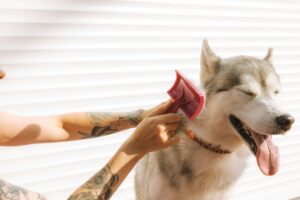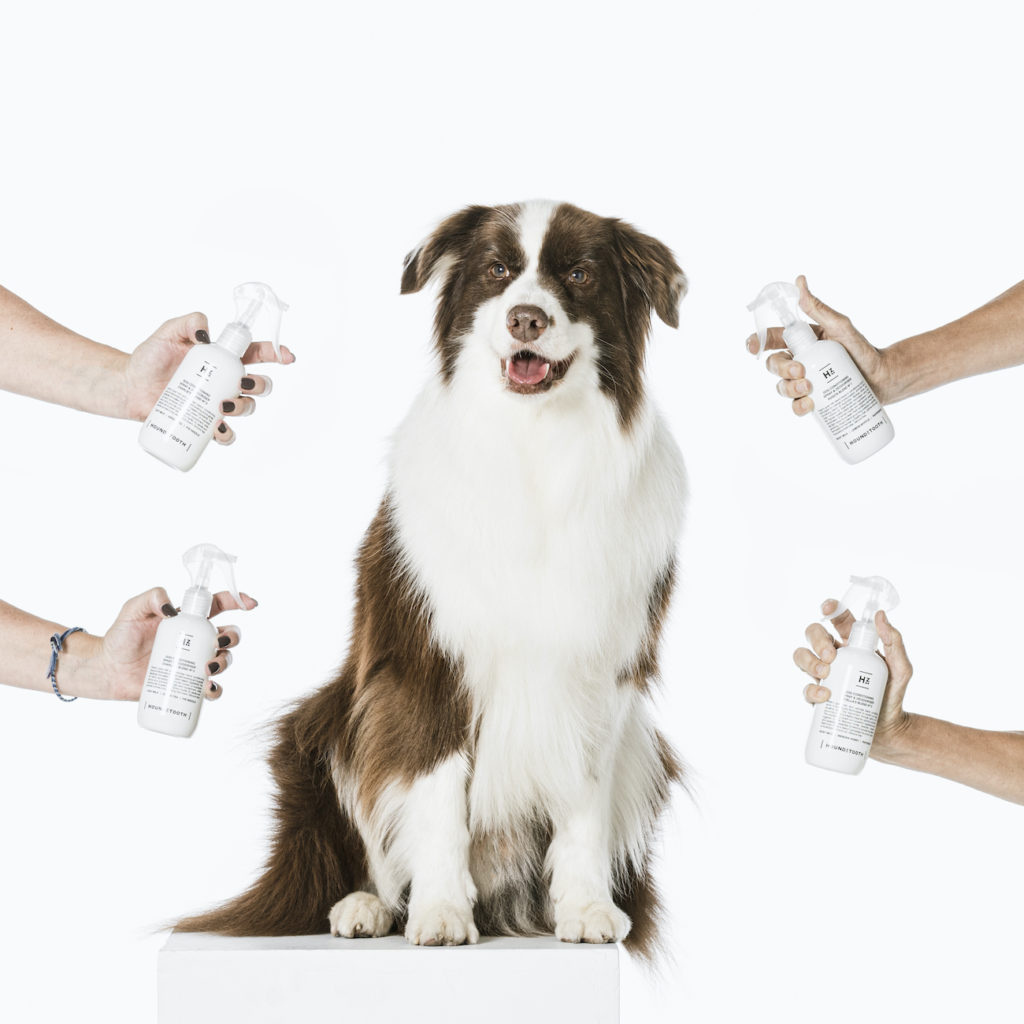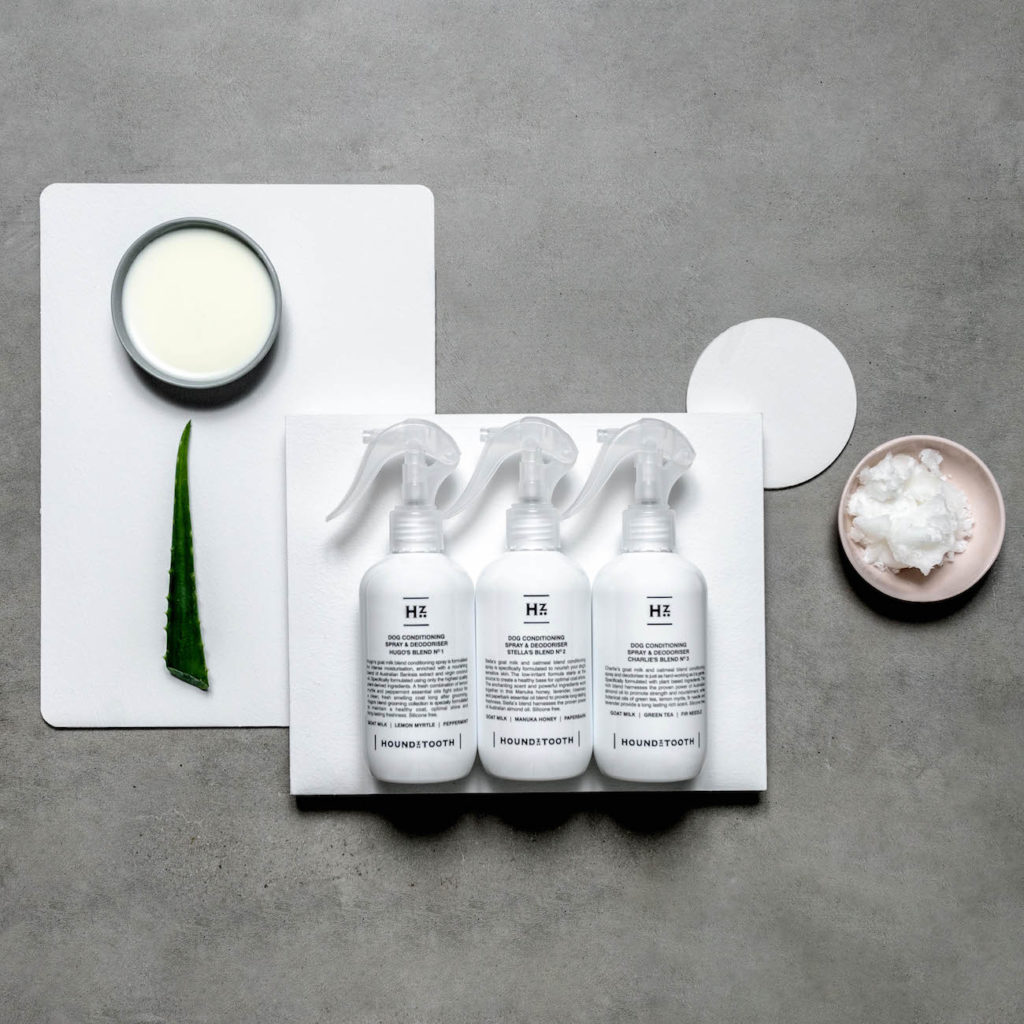Deshedding: Tips for Grooming Border Collies & Double Coat Breeds

Growing up with German Shepherds, Rachael, our Founder and Natural Animal Nutritionist, has years of hands-on experience caring for dogs with thick double coats — especially during heavy shedding seasons like spring.
“Having grown up with German Shepherds, I quickly learned that grooming isn’t just about keeping them looking good — it’s essential for their comfort and wellbeing. During spring, when they shed their winter coats, regular grooming makes a huge difference in keeping their skin healthy and their coat shiny,” says Rachael.
If you’re thinking about welcoming a double coat breed into your family — or already have one — read on for Rachael’s expert advice on how to keep their skin and coat in top condition using a natural grooming routine.
Why grooming is important
While grooming your four-legged friend is important for removing loose hair, it also provides an opportunity for you to thoroughly check your dog over and ensure they are in optimal health.
Be sure to check their ears, eyes, nails, teeth and paw pads, as well as their skin and coat. Regular grooming also helps to keep their coat glossy and shiny.
“Grooming is a chance to connect with your dog — both physically and emotionally. You’re not just brushing out hair; you’re supporting their health from the outside in,” Rachael adds.
Rough and smooth double coats
Many breeds, like German Shepherds, Border Collies and Golden Retrievers have what’s known as a double coat — a soft, dense undercoat beneath a layer of longer, water-resistant guard hairs.
Throughout the year, these dogs shed regularly, and brushing a few times a week is usually enough to keep shedding under control.

However, twice a year — typically in spring and autumn — double coat breeds “blow” their coat completely in preparation for the season ahead. During these times, daily brushing is essential to manage loose hair and maintain coat health.
Choosing the right grooming tools
Using quality grooming tools and products makes all the difference when caring for a double coat.
Rachael recommends keeping these essentials on hand:
- A rake
- A slicker brush
- A metal comb
- A bristle brush
- A Houndztooth Conditioning & Deodorising Spray or Detangler Spray
Houndztooth Conditioning & Deodorising and Detangler Sprays
Houndztooth’s premium pet shampoo & conditioner range including their Conditioning & Deodorising and Detangler Sprays are specially formulated to detangle, deodorise, and deeply nourish your dog’s coat. They help make grooming easier and more enjoyable for both you and your pup.
- They minimise fur breakage
- They make it easier to move the comb or brush through the coat
- They create a more comfortable experience for your dog by avoiding tugging
- They reduce static in your dog’s hair
Our Conditioning & Deodorising Sprays are formulated with a unique blend of goat milk and Australian botanicals and oils which won’t strip away your dog’s natural oils. Instead, they work together to nourish, fight odours, detangle and strengthen your pup’s coat.

Free from silicone and other nasties, our topical sprays won’t harm your precious pup’s skin or coat. Houndztooth’s Conditioning & Deodorising Sprays include:
- Hugo’s Blend No.1 Spray & Deodoriser with lemon myrtle and peppermint to detangle, fight odour and maintain long-lasting freshness.
- Stella’s Blend No.2 Spray & Deodoriser with Manuka honey and paperbark to nourish your dog’s delicate skin and detangle their coat.
- Charlie’s Blend No.3 Spray & Deodoriser with green tea and fir needle to hydrate, detangle and strengthen.
“I created Houndztooth’s grooming range to make natural coat care simple and effective. Our sprays help restore coat health while being gentle on the skin — something I always wished I had when grooming my own dogs,” Rachael shares.
Brushes and Combs: The Right Routine
Start by lightly misting your dog’s coat with Houndztooth’s Conditioning & Deodorising Spray.
Then follow these steps:
-
Use a rake or slicker brush to remove loose hair from the undercoat and distribute natural oils.
-
Use a wide-tooth comb for the tail, head area, and feathered leg hair.
-
Continue brushing until no more shed hair appears.
-
Finish with a bristle brush to smooth the outer coat and remove any last loose hairs.
Checking the Nails and Paw Pads
Don’t forget to check your dog’s nails — overgrown nails can cause discomfort and walking issues.
If their nails touch the ground or you hear clicking when they walk, it’s time for a trim.
Trim only the tips, avoiding the quick (the blood vessel inside the nail). If you’re unsure or uncomfortable doing this yourself, visit a qualified groomer or vet.
Every few months, trim the hair between paw pads to prevent matting and discomfort.
Regular grooming makes all the difference
Matted fur can irritate your dog’s skin and become difficult to manage once it sets in.
Regular brushing helps prevent mats, removes dead hair, and keeps the skin and coat in great condition.
Always brush your dog thoroughly before bathing to prevent tangles and make washing easier.
“Consistent grooming is one of the simplest ways to keep your dog healthy, comfortable, and happy. It’s about caring for them naturally, inside and out,” says Rachael.
